Animals
The natural forest widely remain in Mt. Takao which is different from the man-made forests in nearby area. The south face is warm temperate forest with trees like oak trees and the north face is temperate forests with trees like Fagus crenata. About 30 kinds of animals including mammals such as flying squirrel and squirrel, reptile, amphibia and fish inhabits that prefers Mt. Takao's varieties of species of preys and forests. One way to enjoy exploring Mt. Takao is to find these animal's nests.
-
Macaca fuscata (Japanese Macaque) Macaca fuscata
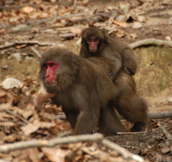
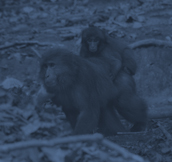 Macaca fuscata (Japanese Macaque) Selected
Macaca fuscata (Japanese Macaque) Selected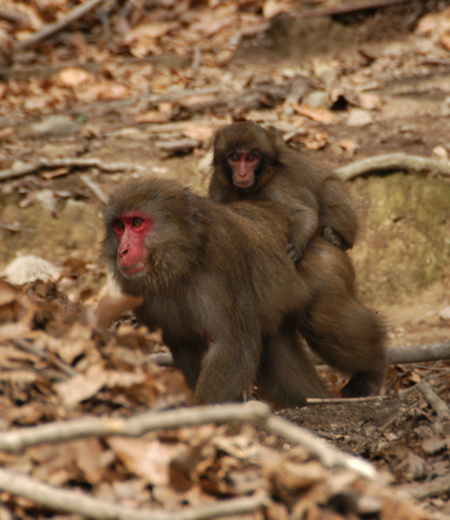 Main region: Honshu, Shikoku and Kyushu. The ones live in Shimokita peninsula in Aomori prefectures are widely known as the World’s northernmost monkeys (Hokugen-no-saru in Japanese). Found in forests in mountains. In Mt. Takao, there are wild species and sometimes found them in groups at mountain trails. Red face and red bottom is very distinctive. Normally live in large groups called troop consists of several males and hundreds of female and children. Thus, there is a possibility of finding many monkeys when encountering just one monkey. Are omnivores and mainly feed on vegetables. Feed on leaves and sprouts of plants, fruits and insects and even barks of trees in winter when there are limited foods. Have cheek pouches, where food is stuffed temporarily.
Main region: Honshu, Shikoku and Kyushu. The ones live in Shimokita peninsula in Aomori prefectures are widely known as the World’s northernmost monkeys (Hokugen-no-saru in Japanese). Found in forests in mountains. In Mt. Takao, there are wild species and sometimes found them in groups at mountain trails. Red face and red bottom is very distinctive. Normally live in large groups called troop consists of several males and hundreds of female and children. Thus, there is a possibility of finding many monkeys when encountering just one monkey. Are omnivores and mainly feed on vegetables. Feed on leaves and sprouts of plants, fruits and insects and even barks of trees in winter when there are limited foods. Have cheek pouches, where food is stuffed temporarily.
●Body Length about 47 to 70 cm
●Season All year -
Sus scrofa leucomystax (Japanese Wild Boar) Japanese Wild Boar
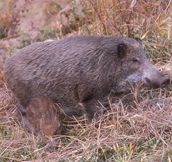
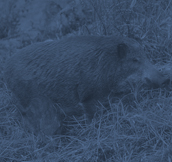 Sus scrofa leucomystax (Japanese Wild Boar) Selected
Sus scrofa leucomystax (Japanese Wild Boar) Selected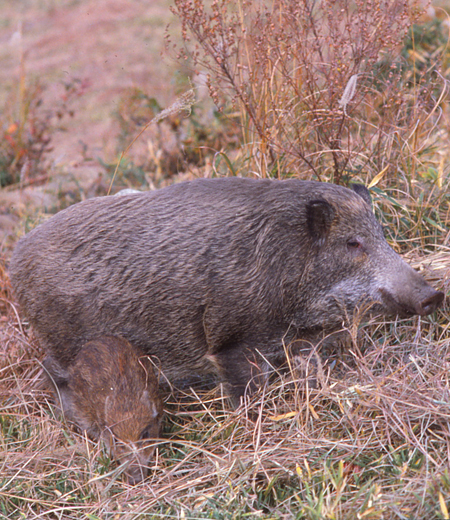 Main region: Honshu (West of Kanto area), Shikoku and Kyushu. Found in woodlands in satoyama (satoyama is where residential area and woodlands coexists in rural area) and forests in mountains. The color of hair is gray-brown to light black or brown. The wild boar piglets have stripe patterns and often called as “Uribo (wild boar piglet)”. Are active at night. Dig up the ground with snouts and feed on roots of plants, insects and earthworms. Their sense of smell is well developed which enable them to look for potatoes in soils with snout. Have unique habit called Nuta (nota)-uchi literally meaning to wallow in muds. This is to scrape off parasites by bathing in the muds or swampy areas they created. In Mt. Takao, sometimes these swampy areas where wild boars wallowed could be found near mountain trails.
Main region: Honshu (West of Kanto area), Shikoku and Kyushu. Found in woodlands in satoyama (satoyama is where residential area and woodlands coexists in rural area) and forests in mountains. The color of hair is gray-brown to light black or brown. The wild boar piglets have stripe patterns and often called as “Uribo (wild boar piglet)”. Are active at night. Dig up the ground with snouts and feed on roots of plants, insects and earthworms. Their sense of smell is well developed which enable them to look for potatoes in soils with snout. Have unique habit called Nuta (nota)-uchi literally meaning to wallow in muds. This is to scrape off parasites by bathing in the muds or swampy areas they created. In Mt. Takao, sometimes these swampy areas where wild boars wallowed could be found near mountain trails.
●Body Length about 140 cm
●Season All year -
Meles meles anakuma (Japanese Badger) Japanese Badger
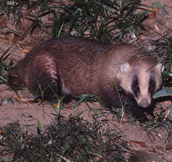
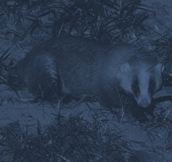 Meles meles anakuma (Japanese Badger) Selected
Meles meles anakuma (Japanese Badger) Selected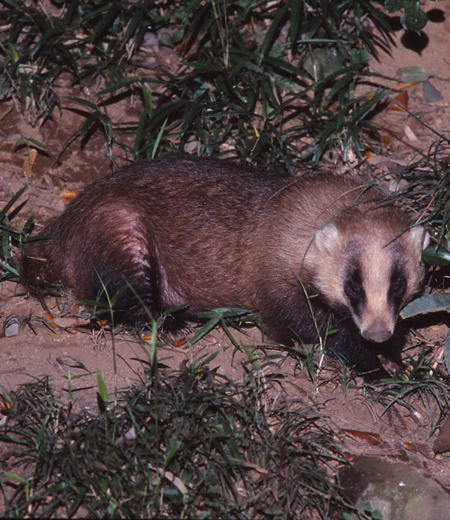
Main region: Honshu, Shikoku and Kyushu. Found in forests from low elevations to mountains. The other name is Mujina in Japanese but often mixed up with raccoon dog as they are also called as Mujina in some places in Japan. Both badger and raccoon dog are very similar in appearance and habit, however raccoon dog is in canidae family that is not a closely related species. The Japanese name is Nihon-anaguma has the word bear (guma) but they are not in the same family with bears. Are good at digging holes as Anaguma literally meaning hall digging bear states. Create 10 to 20 meters long tunnel in underground and lairs by using sharp nails. Rest in lairs during daytime and become active at night. Walk around mountains and feed on acorns, fruits, earthworms, insects, frogs and snails.
●Body Length about 44 to 68 cm
●Season April to November -
Sciurus lis (Japanese Squirrel) Japanese Dwarf Flying Squirrel
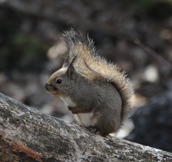
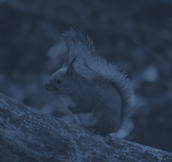 Sciurus lis (Japanese Squirrel) Selected
Sciurus lis (Japanese Squirrel) Selected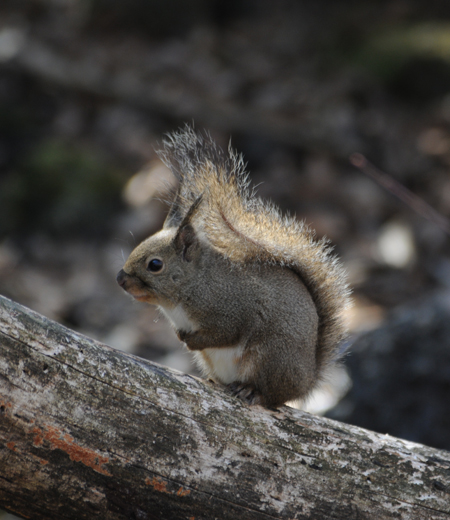 Main region: Honshu, Shikoku, and Kyushu. Rarely seen in Kyushu and Chugoku region due to deteriorated habitat. Found in forests in low elevations. Live mostly on trees but often come down to the ground. Create spherical shaped dreys with small branches and moss at spaces between branches. Are active in early morning and late afternoon but sometimes found at mountain trails. Feed on nuts and buds of trees and store a number of acorns in soils for the foods during winter. Have distinct long tails and look very cute when holding acorns and walnuts to eat. Sometimes, they jump more than 10 meters and move from branches to branches.
Main region: Honshu, Shikoku, and Kyushu. Rarely seen in Kyushu and Chugoku region due to deteriorated habitat. Found in forests in low elevations. Live mostly on trees but often come down to the ground. Create spherical shaped dreys with small branches and moss at spaces between branches. Are active in early morning and late afternoon but sometimes found at mountain trails. Feed on nuts and buds of trees and store a number of acorns in soils for the foods during winter. Have distinct long tails and look very cute when holding acorns and walnuts to eat. Sometimes, they jump more than 10 meters and move from branches to branches.
●Body Length about 20 cm
●Season all year round -
Petaurista leucogenys (Japanese Giant Flying Squirrel) Japanese Dwarf Flying Squirrel
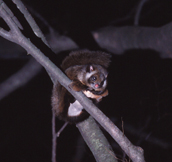
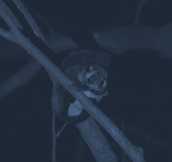 Petaurista leucogenys (Japanese Giant Flying Squirrel) Selected
Petaurista leucogenys (Japanese Giant Flying Squirrel) Selected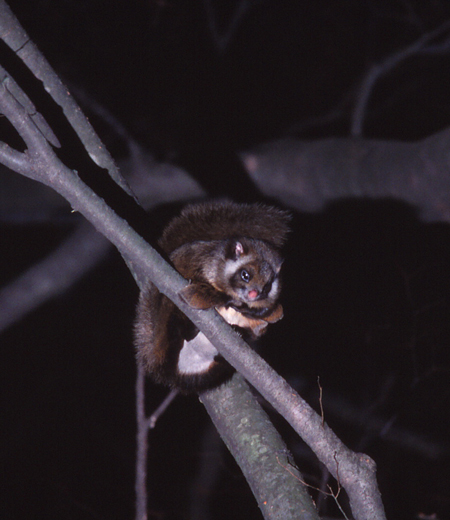 Main region: Honshu, Shikoku and some part of Kyushu. Found in forests from flatlands to mountains. Are well known as gliding mammals. Glide like a glider from a tree to a tree by stretching wings covering their body and feed on leaves, buds, flowers and seeds of trees. With well-developed gliding ability, glide over 100 meters. Live mostly on trees and rest in a nest created in hollows and holes of big trees during daytime. Become active after sunset and hunt for prey. In Mt. Takao, often found around Yakuoin and a tour with guide is organized.
Main region: Honshu, Shikoku and some part of Kyushu. Found in forests from flatlands to mountains. Are well known as gliding mammals. Glide like a glider from a tree to a tree by stretching wings covering their body and feed on leaves, buds, flowers and seeds of trees. With well-developed gliding ability, glide over 100 meters. Live mostly on trees and rest in a nest created in hollows and holes of big trees during daytime. Become active after sunset and hunt for prey. In Mt. Takao, often found around Yakuoin and a tour with guide is organized.
●Body Length about 34 to 50 cm
●Season All year(未翻訳)鳴き声を聞く
-
Pteromys momonga (Japanese Dwarf Flying Squirrel) Japanese Dwarf Flying Squirrel
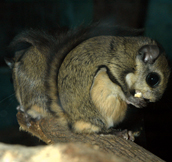
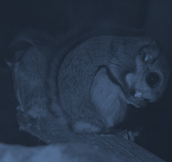 Pteromys momonga (Japanese Dwarf Flying Squirrel) Selected
Pteromys momonga (Japanese Dwarf Flying Squirrel) Selected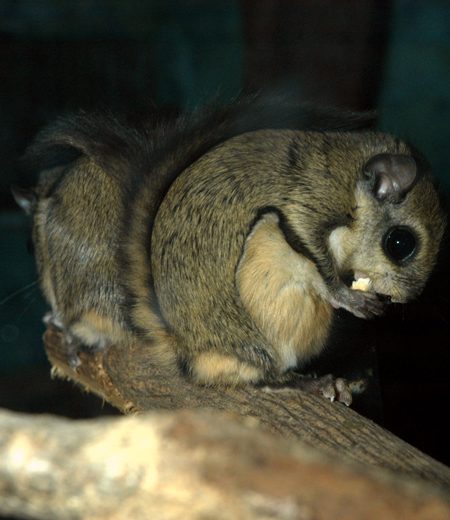 Main region: Honshu, Shikoku and Kyushu. Found in forests in mountains. Have distinct big round eyes and glide by stretching wings like giant flying squirrels. Flight distance is normally 20 to 30 meters but sometimes glide over 100 meters and their flight ability is like giant flying squirrels. Live mostly on trees and become active at night and feed on leaves, buds, fruits, seeds and barks of trees by gliding from trees to trees. The body size is a lot smaller than giant flying squirrels and they are twice as large in body length and 10 times heavier in weight.
Main region: Honshu, Shikoku and Kyushu. Found in forests in mountains. Have distinct big round eyes and glide by stretching wings like giant flying squirrels. Flight distance is normally 20 to 30 meters but sometimes glide over 100 meters and their flight ability is like giant flying squirrels. Live mostly on trees and become active at night and feed on leaves, buds, fruits, seeds and barks of trees by gliding from trees to trees. The body size is a lot smaller than giant flying squirrels and they are twice as large in body length and 10 times heavier in weight.
●Body Length about 14 to 20 cm
●Season All year -
Apodemus speciosus (Large Japanese Field Mouse) Muridae
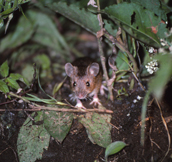
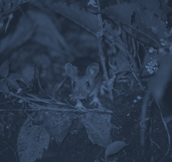 Apodemus speciosus (Large Japanese Field Mouse) Selected
Apodemus speciosus (Large Japanese Field Mouse) Selected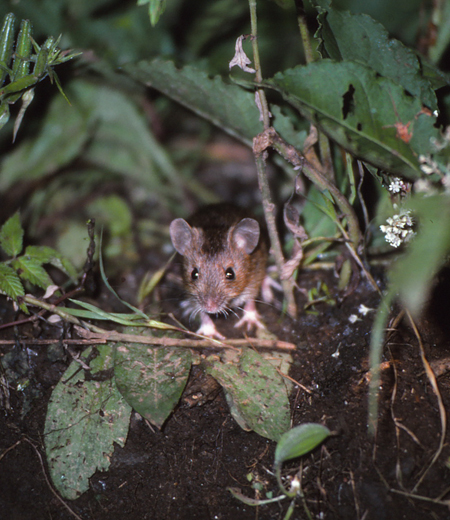 Main region: Hokkaido to Kyushu. This species and small Japanese field mouse are fields mouse native to Japan found in mountains throughout Japan. Small Japanese field mouse live on trees but this species live on ground and do not climb trees. Dig tunnels and nest underground. Feed on fallen seeds, rhizomes and small insects. Tends to store dozens of times the volumes of nuts and seeds including acorns typically consume. The body hair is red-brown as the Japanese name Aka-nezumi literally meaning red-colored rat state. Have distinct big round eyes but are rarely seen during the day because they are mostly active at night. Hind legs are well developed and could walk a couple of kilometers.
Main region: Hokkaido to Kyushu. This species and small Japanese field mouse are fields mouse native to Japan found in mountains throughout Japan. Small Japanese field mouse live on trees but this species live on ground and do not climb trees. Dig tunnels and nest underground. Feed on fallen seeds, rhizomes and small insects. Tends to store dozens of times the volumes of nuts and seeds including acorns typically consume. The body hair is red-brown as the Japanese name Aka-nezumi literally meaning red-colored rat state. Have distinct big round eyes but are rarely seen during the day because they are mostly active at night. Hind legs are well developed and could walk a couple of kilometers.
●Body Length about 8 to 14 cm
●Season All year -
Apondemus argenteus (Small Japanese Field Mouse) Muridae
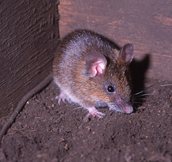
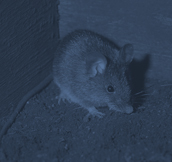 Apondemus argenteus (Small Japanese Field Mouse) Selected
Apondemus argenteus (Small Japanese Field Mouse) Selected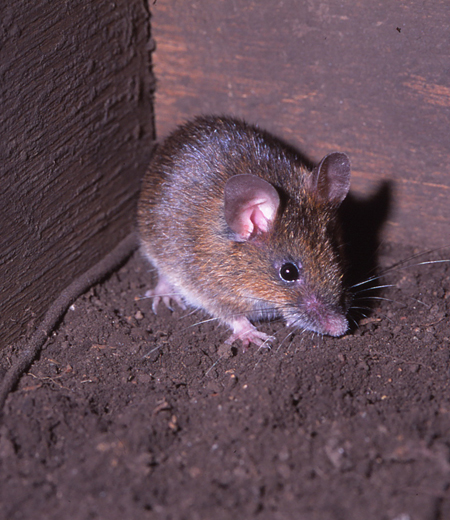 Main region: Throughout Japan including Hokkaido, Honshu, Shikoku, Kyushu, Sado Island, Miyake Island and Yaku Island. Field mouse native to Japan found in forests from low to high elevations. Very similar to large Japanese field mouse but the body size is a lot smaller and tail is longer than the length from the head to the ramp. The large Japanese field mouse live on ground but this species live mostly on trees as their body weight is lighter and have flexible tails and thin leg fingers. Balance the body with long tails and move fast even on vines and thin branches. Are semi-arboreal and live up to 10 meters high and sometimes create nests on trees. Feed on acorns, seeds and insects.
Main region: Throughout Japan including Hokkaido, Honshu, Shikoku, Kyushu, Sado Island, Miyake Island and Yaku Island. Field mouse native to Japan found in forests from low to high elevations. Very similar to large Japanese field mouse but the body size is a lot smaller and tail is longer than the length from the head to the ramp. The large Japanese field mouse live on ground but this species live mostly on trees as their body weight is lighter and have flexible tails and thin leg fingers. Balance the body with long tails and move fast even on vines and thin branches. Are semi-arboreal and live up to 10 meters high and sometimes create nests on trees. Feed on acorns, seeds and insects.
●Body Length about 6 to 10 cm
●Season All year -
Eothenomys smithii Muridae
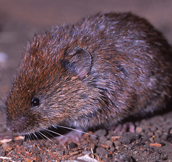
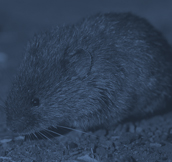 Eothenomys smithii Muridae
Eothenomys smithii Muridae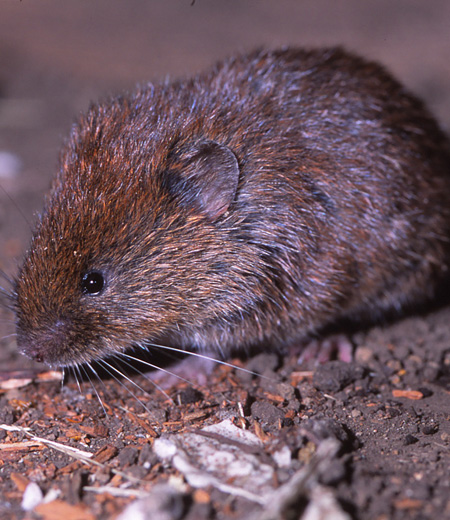 Main Region: South of Niigata and Fukushima prefecture in Honshu, and Kuyshu, Shikoku and Oki-Togo Island of Oki Islands.
Main Region: South of Niigata and Fukushima prefecture in Honshu, and Kuyshu, Shikoku and Oki-Togo Island of Oki Islands.
Found in massif of low to high mountains. IN Mt. Takao, it is found at Mt. Takao station of cable car and forests around 350 meters above sea level on Trail 1.
The color of hair is red-brown to yellow-brown on the back and light orange to orange on the stomach. Feed on grass grow in rocky area and nuts. Having small eyes and ears with a relatively short tail are suitable for living underground. Live both on and under the ground by digging shallow tunnels in forests or create a nest in a space between rocks with fallen leaves.
Body Length: about 7 to 11 cm
Season: All year -
Mogera imaizumii (Small Japanese Mole) Talpidae
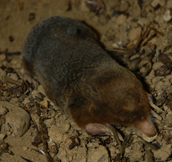
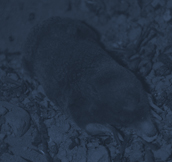 Mogera imaizumii (Small Japanese Mole) Talpidae
Mogera imaizumii (Small Japanese Mole) Talpidae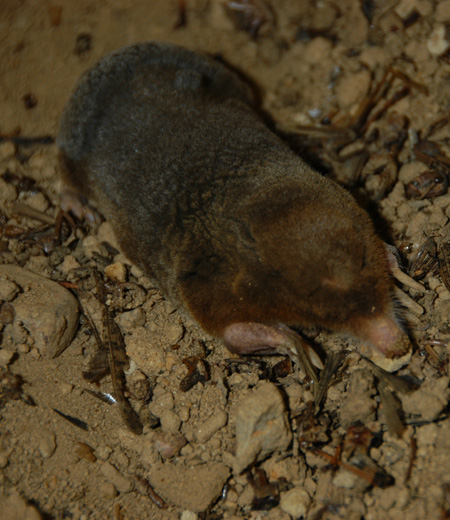 Main region: Honshu (Tohoku region down to Sizuoka, Nagano and Ishikawa prefecture), Kyoto and Hiroshima prefecture, Shikoku and some parts of Kii peninsula. Found in grasslands and croplands of flatlands and forests in mountains. Moles are good at digging holes underground with well developed fore legs and create tunnels. The body shape is cylindrical which is very suited to live in tunnels and the body hair is like velvet that prevents muds covering their body. Patrol regularly in tunnels and hunt for prey including earthworms, centipedes and larvae of insects with well developed sense of smell. Molehills created after moles dig holes are often found in Mt. Takao.
Main region: Honshu (Tohoku region down to Sizuoka, Nagano and Ishikawa prefecture), Kyoto and Hiroshima prefecture, Shikoku and some parts of Kii peninsula. Found in grasslands and croplands of flatlands and forests in mountains. Moles are good at digging holes underground with well developed fore legs and create tunnels. The body shape is cylindrical which is very suited to live in tunnels and the body hair is like velvet that prevents muds covering their body. Patrol regularly in tunnels and hunt for prey including earthworms, centipedes and larvae of insects with well developed sense of smell. Molehills created after moles dig holes are often found in Mt. Takao.
●Body Length about 12 to16 cm
●Season All year -
Urotrichus talpoides (Greater Japanese Shrew-mole) Talpidae
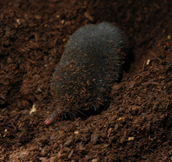
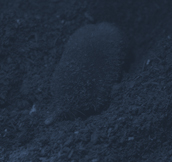 Urotrichus talpoides (Greater Japanese Shrew-mole) Talpidae
Urotrichus talpoides (Greater Japanese Shrew-mole) Talpidae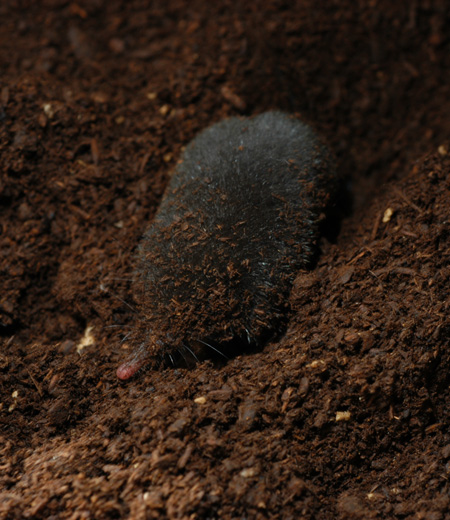 Main region: Honshu, Shikoku, Kyushu, Awaji Island and Goto Islands. Found in forests and grasslands on hills and mountains rather than flatlands where most of species of moles are found. The Japanese name Himizu literally meaning does not live in the sun, however they live both on the ground and underground. Have longer tails than small Japanese moles. The fore legs are small and live in fallen leaves layers and have less ability to dig holes and live in litter layers or humis layers where it is not too deep underground and create tunnels. Become active at night and come out to the ground. Feed on earthworms, spiders and insects but sometimes fruits and seeds.
Main region: Honshu, Shikoku, Kyushu, Awaji Island and Goto Islands. Found in forests and grasslands on hills and mountains rather than flatlands where most of species of moles are found. The Japanese name Himizu literally meaning does not live in the sun, however they live both on the ground and underground. Have longer tails than small Japanese moles. The fore legs are small and live in fallen leaves layers and have less ability to dig holes and live in litter layers or humis layers where it is not too deep underground and create tunnels. Become active at night and come out to the ground. Feed on earthworms, spiders and insects but sometimes fruits and seeds.
●Body Length about 8 to 11 cm
●Season All year -
Pipistrellus abramus (Japanese Common Pipistrelle) Japanese Common Pipistrelle
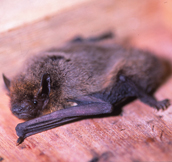
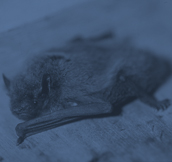 Pipistrellus abramus (Japanese Common Pipistrelle) Japanese Common Pipistrelle
Pipistrellus abramus (Japanese Common Pipistrelle) Japanese Common Pipistrelle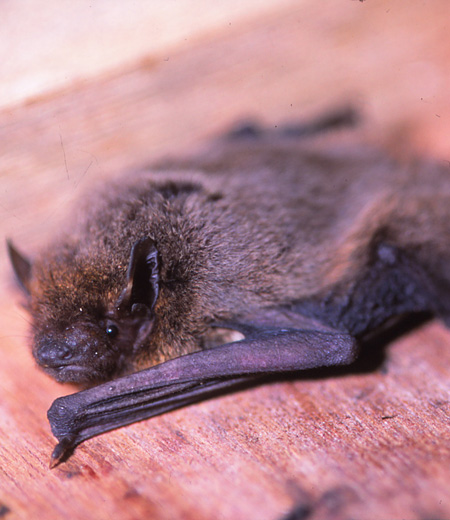 Main region: Throughout Japan except Hokkaido and also in China, Korean peninsula and Taiwan. Most bats often found even in Tokyo areas that fly randomly by changing directions in late afternoon are this species. Another name is Ie-komori literally meaning bats at home because they sometimes live in groups in the ceilings. In city areas, often live in spaces under bridges and elevated railway. Are active at night but become active from late afternoon and hunt for small insects such as mosquitoes in grasslands and riverbeds. The life span differs by gender, male for one year and female for six years.
Main region: Throughout Japan except Hokkaido and also in China, Korean peninsula and Taiwan. Most bats often found even in Tokyo areas that fly randomly by changing directions in late afternoon are this species. Another name is Ie-komori literally meaning bats at home because they sometimes live in groups in the ceilings. In city areas, often live in spaces under bridges and elevated railway. Are active at night but become active from late afternoon and hunt for small insects such as mosquitoes in grasslands and riverbeds. The life span differs by gender, male for one year and female for six years.
●Body Length about 4 to 6 cm
●Season April to about October
